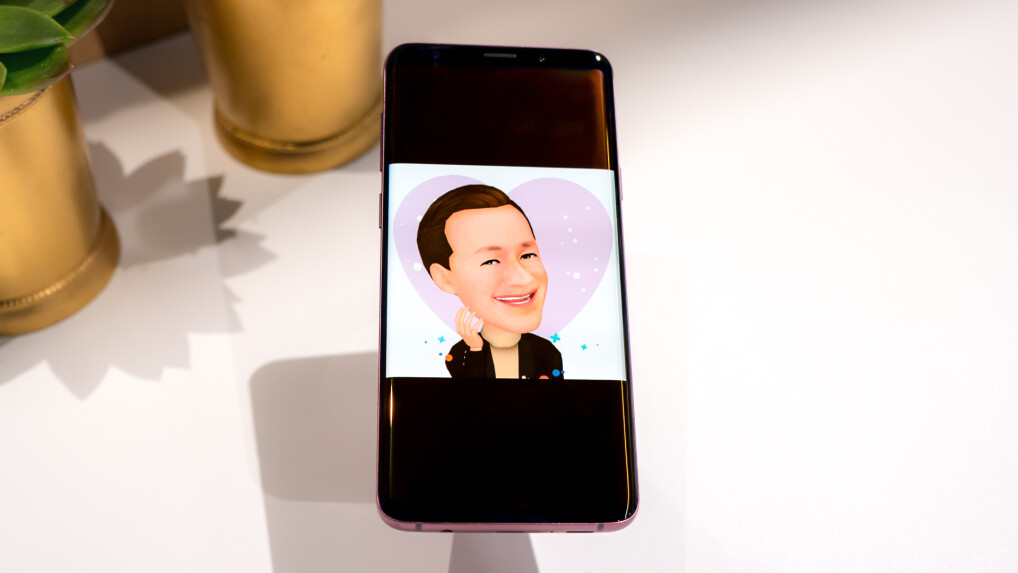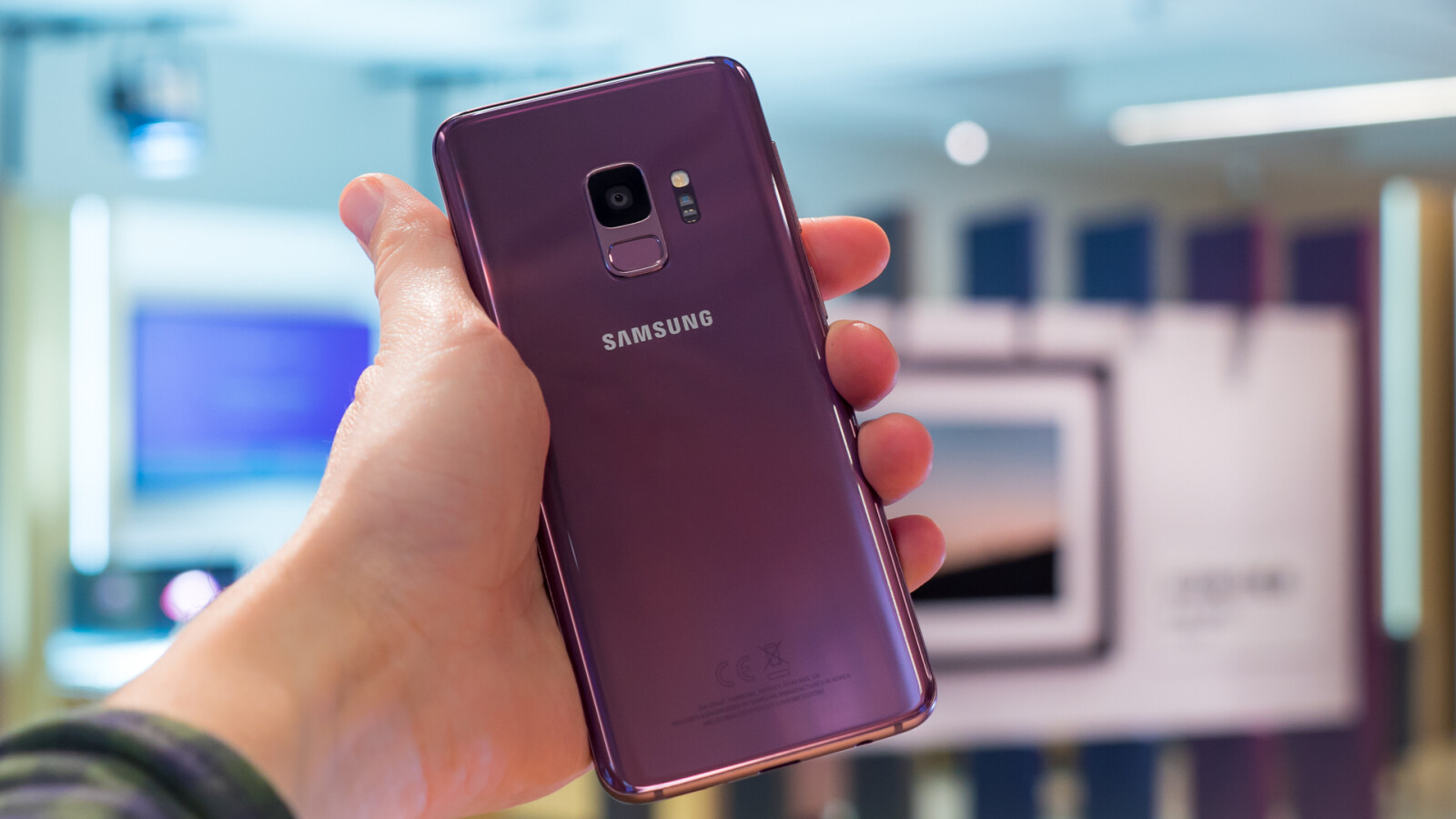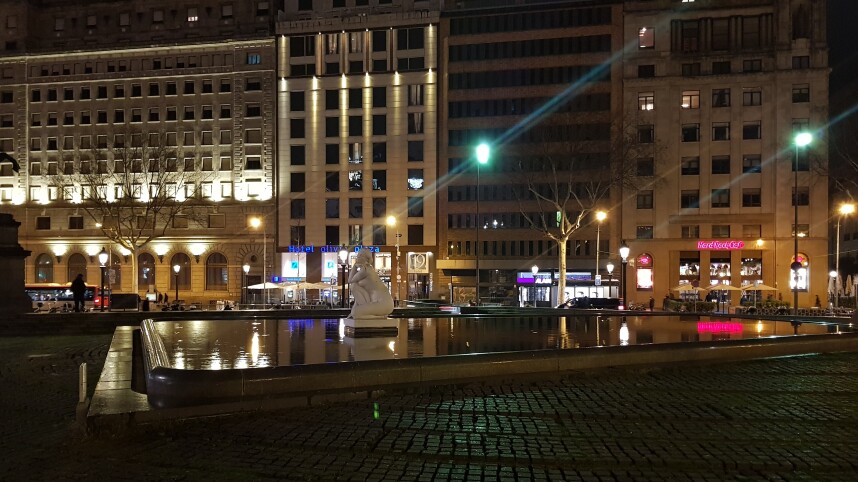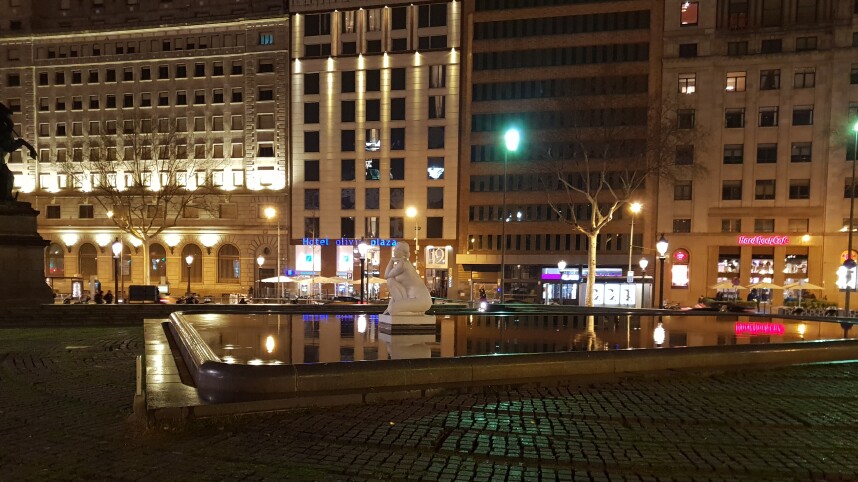Is it still worth buying a Samsung smartphone?

Design and craft
9.0
Equipment and operation
7.0


Test conclusion: The S9 is lighter and sounds better, but the fingerprint sensor is still annoying.
The compact form factor of the Samsung Galaxy S9 is convincing in 2020. The camera and computing power are still good, but the era is slowly on the mobile phone. Especially the missing second camera hurts. The battery life is only average.
we like
- Stereo speakers
- Dual SIM
- convenient
- IP68
We don't like
- Fingerprint sensor is hard to feel
- Smart scanning is still too much trouble
- Use dual cameras only on Galaxy S9 +
- No more Android updates
Our test on the Samsung Galaxy S9 made it clear whether the 2020 purchase is still worth it, you can safely buy at that price and how to order updates for the Galaxy S9. We will also show you the best alternatives to the Galaxy S9.
table of Contents
-
Galaxy S9 is priced at 399 euros
-
No more Android updates, just security patches
-
Design and craft
-
Smart scan
-
Performance and memory
-
Voice quality
-
Software
-
Battery Life
-
Stereo speakers
-
camera
-
Variable aperture
-
3D emoji
-
The best alternative to the Galaxy S9
-
in conclusion
And alternatives
– The new operating system version is for Samsung Galaxy S9
The Android 10 update for the Galaxy S9 is here and can also be installed in Germany. Samsung did not postpone the update until March until recently.
The Samsung Galaxy S9 was launched in the German market in March 2018, at a price of 849 euros. In 2020, the price will be halved. Therefore, you sometimes get the Samsung Galaxy S9 for 399 Euros. Currently, the price of Samsung mobile phones is between 439 and 479 euros.
Galaxy S9 is priced at 399 euros
We also see fewer and fewer retailers offering the device. It can be assumed that Samsung is phasing out production of the Galaxy S9, and the device is gradually disappearing from the market. No one flirting with S9 should wait too long before buying it.
However, as always, the problem still exists. After all, as mentioned above, mobile phones have been around for two years.
No more Android updates are just security patches
This means that you will no longer receive updates to Android 11, the recently released Android 10 update is the last major version update for smartphones, but it is still guaranteed to receive two years of regular security patches. However, it can be assumed that from 2021, this information will no longer be distributed monthly, but only quarterly.
If you can afford these restrictions, then you can find the actual operation of the Galaxy S9 in 2020 below. The following text is our test report from 2018 (the test level at that time was 8.8), we have adapted to the current situation in some places. Finally, we also introduced alternatives to Samsung phones.
Design and craft
Samsung is carefully developing the borderless infinite display design introduced by the S8 through the Galaxy S9. In the test, the new top-level smartphone scored three points higher than its predecessor, but there is still a major drawback, and the widely touted features are not as spectacular as expected.
Note: This article focuses on the Samsung Galaxy S9 (SM-G960F) model. Our impression of the larger sister model can be found in our review of the Samsung Galaxy S9 Plus.
At first glance, the Galaxy S8 and Galaxy S9 look almost the same. In fact, there are some subtle differences:
- According to Samsung, the upper and lower edges of the screen have shrunk. To realize this, you really need eagle eyes.
- At first glance, the distance sensor and iris scanner can no longer be identified on the S9. Only the front camera will "interfere" with the smooth surface of the Galaxy S9.
- Both smartphones have a depth of 8.5 mm, which is a little thicker than their predecessors.
- This is related to another change: the fingerprint sensor is still on the back. However, it will now be placed under the camera instead of next to it. talk about it later.
- The transition between the edge display and the case becomes sharper.
The thickness of the Galaxy S9 is slightly thicker, and due to the greater change in angle from the display to the case, the finger has more grip points, which ensures that Samsung smartphones have a greater grip effect. In the test, the successor to the S8 is no longer as easy to slip away from us as the previous year's model. Unfortunately, the sensitivity of the fingerprint shared by the Galaxy S9 and other smartphones with glass covers still exists. Especially when using the black variant, you can quickly see fingerprints and greasy streaks. The "Coral Blue" (blue) and "Lilac Purple" (purple) versions are not easily affected.
What else do we like: The Galaxy S9 is more compact than the Galaxy S8. Unlike many competitors with large screens or Samsung Note 8, the S9 can still be carried comfortably in your pocket and you wo n’t get injured while sitting there.
Galaxy S9 (Plus) in the picture
Picture 1/15
This is what the Galaxy S9 looks like!
(Source: Netzwelt)
For placing a fingerprint sensor on the Galaxy S8, Samsung had to accept a lot of criticism. It is no longer on the front, but on the back. There it is placed next to the camera. Therefore, especially those who are right-handed, although they actually only want to unlock their smartphones, they often land their fingers on the camera lens. Samsung now responds to this through the Galaxy S9 and places the sensor under the camera-the same is true of other manufacturers, such as Huawei or LG.
Smart scan
The new position is much cheaper. However, the sensor is only minimally recessed in the housing. Unlike Mate 10 Pro, there is little difference between fingers. In testing, we often fall on the camera again. As an alternative to fingerprint sensors, Samsung has equipped its S9 with facial recognition and iris scanners, just like its predecessor. However, unlike S8, you don't have to choose one of the two technologies, but you can use a combination called "smart scanning".
The advantage of this is that even if the iris scan fails due to bright sunlight, the smartphone can be unlocked. In the test, the "smart scan" actually worked very reliably. In eight out of ten cases, our smartphone was unlocked within a few seconds, and due to scan failures, we were rarely asked to enter a PIN. Compared with fingerprint unlocking, smart scanning is still slow and requires you to press the switch on your smartphone. This is annoying because we are used to unlocking from other devices more conveniently.
Contrary to the design, Samsung screwed the successor of the S8 under the hood. In order to install the fingerprint sensor under the camera, Samsung engineers told us at a preliminary demonstration in London that the components of the smartphone must be completely rearranged. The Korean manufacturer not only rearranged the hardware.
Performance and memory
The core of the European version of Samsung smartphones is the Exynos 9810 octa-core processor, while in the United States, the S9 is powered by Qualcomm chip Snapdragon 845, which is installed in the Sony Xperia XZ2 in Germany. Exynos processors are manufactured by Samsung Semiconductor. Like Samsung Mobile, semiconductor manufacturers are part of the entire group.
The chip is based on the architecture of its predecessor Exynos 8895, which is used in the Galaxy S8. Therefore, production continues with a 10-nanometer process, and the chip also includes a total of 8 cores. As before, they are divided into two clusters. Half of the cores are optimized for performance, and the remaining cores should be as energy-efficient as possible. When building the kernel, Samsung does not rely on the standard design of the British supplier ARM like many other manufacturers, but on its own architecture. Now, Exynos 9810 uses the third generation. Samsung has also improved the cache. The maximum clock frequency is increased from 2.3 GHz to 2.9 GHz.
In daily use, the chip will not show its life in 2020. There will be no major delays when the application starts, and at most there can be longer game loading times. However, once loaded, they will also run smoothly to a large extent. By the way, from our point of view, Samsung measured 4 GB of RAM (RAM) for the S9. This test rarely uses more than 2.8 GB of RAM. If you need more RAM, you must use the Plus model. This provides 6 GB of RAM. According to Samsung, additional storage space is needed here to realize various functions of the dual camera.

RAM in a smartphone: How much RAM does my phone need?2, 4, 6 or 8 GB?
Both models have 64 GB of device storage space for photos and videos. The factory has nearly 50 GB of free space. The Glaxy S9 with 256 GB of memory is only available abroad, and Samsung only offers the S9 + with 256 GB of memory in the country. If the integrated memory is insufficient, you can insert a microSD card with a maximum size of 400 GB into the S9. You cannot integrate them into system memory. Samsung does not support available storage functions, but traditionally it is possible to move applications to the SD card.
Voice quality
In addition, the memory card slot can now accommodate a second SIM card. So far, a special dual SIM card variant must be purchased for this. However, the two memory card slots are not the same. Only one of the two slots can use fast data radio LTE (4G). The second SIM card enters the mobile Internet at a speed of up to 3G. You can specify the SIM card that should use LTE in the settings of your smartphone.

Insert the Galaxy S9 SIM card: Which format do I need?Mini, micro or nano?
Samsung has solved the problem of using two SIM cards in mobile phones and SMS applications. After inserting the second SIM card, the second handset or the second send button will be displayed here. You only need to touch a button, you can use two SIM cards to make calls and send text messages. If you use the device with a professional private SIM card, it is very practical.
The voice quality of the Galaxy S9 is very good. In the test, the second microphone on the top reliably filtered out noise such as car noise, and only wind energy reduced voice quality. Despite these interventions, most of the sounds sound natural and not suppressed.
Software
Android 8.0 is the factory operating system. The Korean manufacturer introduced this through its own user interface Samsung Experience 9.0. It contains many extensions that you cannot find in regular Android-for example, the landscape mode of the start screen or the Smart Stay function, which prevents you from turning off the display when reading text but not entering anything for a long time. Unfortunately, she looked very swollen and confused.

Galaxy S9: This is newThat's new
After updating to Android 10, the Galaxy S9 now runs with the new user interface One UI 2.0, which is cleaner and provides clear menu navigation. You do n’t have to have the useful additional features of the previous interface.
Battery Life
Samsung equipped its Galaxy S9 with the same 3,000 mAh battery as its predecessor. Battery capacity is at the level of direct competitors, only Huawei's Mate 10 Pro provides a larger battery. General statements about battery life are always tricky, because it depends on many factors, such as the mobile network used, the quality of reception at the location, and your own usage behavior. After nearly 48 hours of continuous use of the Galaxy S9, we can say that the battery life has reached the previous level.

Smartphone battery drains quickly: these are the reasonsSmartphone first aid
Even if you often put high demands on the Galaxy S9, you should be able to spend a day with a day ’s battery charge, but at the end of the day, on average, there should still be 20% to 30% of power left. Those who use less smartphones may have more reserves in a day. Usually, you have to hang the Galaxy S9 again at night.
By the way, the energy storage is permanently installed and can only be replaced by the customer service department without losing warranty. The Galaxy S9 can be wirelessly charged, but the corresponding charging station is not included in the scope of delivery, or traditionally not included in the socket. If you use the included "adaptive fast charging" power supply, it will take almost 95 minutes to fully charge. Other smartphones charge faster.
Stereo speakers
Samsung is equipped with a mono speaker at the bottom of the Galaxy S8. What makes the fans unhappy is. Even older models such as ZTE Axon 7 outperformed the Galaxy S8 in terms of volume and sound. Samsung now builds its own statement based on stereo speakers in the Galaxy S9.
At first, this term may be a bit misleading. Because the bottom of the Galaxy S9 still has only one speaker. The speaker in the pinna above the display acts as a second speaker, otherwise it is only used for phone calls. Due to different spatial orientations, the Galaxy S9 can only produce stereo sound in a limited range, but its sound is indeed much louder than the Galaxy S8's speakers. According to Samsung, the new Galaxy is 1.4 times louder than the S8 in music playback, and our tests can confirm this. The sound also looks more balanced.
In order to get a louder sound, Samsung provides the option to switch Dolby Atmos. Audio technology is designed to simulate spatial sound. In fact, Dolby Atmos can make the S9 sound a bit louder, but in our opinion, the sound of a smartphone looks very fake and tends to drive too fast. By the way, Dolby Atmos is not only available on the Galaxy S9. The technology is also used in other smartphones. Among them, Dolby Atmos (Dolby Atmos) is integrated in Nokia 6.
camera
"Camera. Think forward." -With this slogan, Samsung even promoted the Galaxy S9 even before the market was released. Therefore, the Korean manufacturer will focus on the camera of its new top smartphone. What does Samsung think about this? The South Korean manufacturer is trying to solve the problem the company has been dealing with since the Galaxy S6: the image quality of smartphone photos in low-light conditions. Although this has greatly improved in recent years, there is still room for improvement. Especially in the dark, smartphone photos are usually an accidental game.
Samsung tried to enhance the low-light function of smartphones with new hardware and improved algorithms. In terms of hardware, manufacturers rely on bright apertures. You can find the hole in the camera lens and adjust the amount of incident light by further opening or closing it. The width of the opening is indicated by the opening number. Small f-numbers represent large openings, and high f-numbers represent small openings.
In the dark, it needs the largest possible aperture, so that as much light as possible enters the sensor, and the Galaxy S9 can have this aperture. Now, the 12-megapixel camera on the back of the smartphone can provide a maximum F / 1.5 aperture. The absolute record of the phone. So far, the aperture of the LG V30 is F / 1.6. The South Korean manufacturer said at a London smartphone conference that the camera on the new Samsung smartphone can capture 28% of the light compared to the S8.
Samsung also uses an algorithm called "multi-frame" to improve the night scene. Under extremely dim lighting conditions, twelve photos were combined into one photo. Eliminate image errors, such as color noise. The Galaxy S8 used “Multi-Frame” for the first time, but only three photos were combined into one photo. Samsung said that compared to S8, recordings made with S9 should reduce noise by 30%.
During the Mobile World Congress 2018, Samsung Germany gave us an opportunity to use the Galaxy S9 for a photo tour of Barcelona at night. The following photos were taken on February 27, 2018 from 10pm to 11pm. For this, we used the automatic mode.
Galaxy S9: camera samples
Picture 1/9
In the evening it was Les Rambles. This photo was taken with the Galaxy S9 at 11pm.
(Source: Netzwelt)
The lighting situation during the tour was very scattered. The surrounding environment is not very bright, after all, it is already night. However, many direct and indirect light sources can stimulate the camera. To this end, S9 performs tasks with outstanding performance. Even when performing a visual test on a PC, the image shows only a little noise, and we are not bothered. The recording is also very detailed.
For example, you can see this in Picture 4, which shows the appearance of a department store on Plaza Catalunya. The neon lights of the store are clearly visible on the photo, and you can even partially see what you see in the store window. Even two years ago, even the cameras of top smartphones would surrender here. To be fair, we must also say that the jump observed with the naked eye is not particularly large compared to the direct predecessor.
In the photo tour, we also put the Galaxy S8 in our pocket. As shown in the following image comparison, you can also use Samsung smartphones that are one year older than the old phone to take good low-light photos.
On the left, you can see the photos taken with the Galaxy S9, on the right, we are taking photos with the Galaxy S8.
In contrast, photos taken with the Galaxy S9 look brighter, the neon letters are clearer, and the details here and there are more legible. However, sometimes there may be many readers who believe that S8 can explain the scene more naturally. We still think that the glimmer photos taken with the Galaxy S9 can still be seen today. Even the current top models can naturally provide more detailed images.
Variable aperture
Because of the larger aperture aperture (such as the aperture aperture in the Galaxy S9 camera), there is a risk that the image chromatic aberration (such as stripes) will occur faster under sufficient light, and the depth of field will decrease rapidly, so Samsung is S8 The successor of the model is equipped with a variable aperture. Depending on the lighting conditions, the aperture can be opened or closed by a mechanical device. If the ambient light is below 100 lux, the smartphone will open the aperture to F / 1.5. Otherwise it will remain closed, and then take a picture with an aperture of F / 2.4. Samsung compares it with the human eye, which can also adapt to different lighting conditions. There is nothing to complain in daylight.
If you want to decide the aperture yourself, you must switch to Pro mode. Here you can choose the aperture value F / 1.5 and F / 2.4. Unfortunately, the camera app on the Galaxy S9 does not allow intermediate steps. By the way, the successor of S8 is not the first Samsung smartphone with variable aperture. The Samsung W2018 flip phone only available in China already provides this technology.
The camera of the Galaxy S9 should not only inspire you at night. Samsung also thought of video fans. Like the Sony Xperia XZ, the Galaxy S9 now supports high-definition advanced slow motion super lenses at 960 frames per second (FPS), while Full HD super slow motion lenses only allow Sony's Xperia XZ2. However, at this high frame rate, the smartphone can only record 0.2 seconds, after which the camera module's memory is full and must be emptied. This process will take almost three seconds, after which a new super slow motion may appear.
Galaxy S9: Super slow motion
To start Super Slow Motion, you must switch to "Super Slow Motion" mode in the camera app, press the shutter button once, and then focus on the desired object. If the Galaxy S9 detects that the object is moving, it will create super slow motion. After 0.2 seconds, the clip will continue to run at normal speed until the object moves again. In the video, you can repeat this process up to 20 times. Super slow motion sequences are each about 6 seconds long. You can see such super slow motion in the embedded video.
You can add effects to the recording or add music to it. With the push of a button, they can be converted into gif files and can also be used as live wallpapers on Samsung smartphones. Unfortunately, super slow motion images require a lot of light, so sometimes you have to live in very dark images indoors.
You don't have to install dual cameras on Galaxy S9. This only provides the larger and more expensive model Galaxy S9 +. The second camera extends the capabilities of the S9 camera with double optical zoom and bokeh effect photos. The functional scope is the same as the dual camera of the Galaxy Note 8.

Galaxy S9 vs. Galaxy S9 +: Comparison of Samsung smartphonesSize, battery, camera
3D emoji
Like previous products, the Galaxy S9's front camera has a resolution of 8 megapixels and provides autofocus. The new feature is the ability to create 3D emojis using the front camera. This is your avatar and can reflect your facial features on it. You can also send 3D emojis to your friends, even if they do n’t have a Galaxy S9. It does not matter which Messenger is used.

We are not sure whether 3D emojis will become a new hot topic in chat. (Source: Netzwelt)
Unfortunately, even if more than 100 points should be used to determine facial features, Samsung's 3D images have very little in common with you in most cases. Or do you know the author of this article on 3D emojis? Alternatively, you can animate like an Apple Comig character. There is a rabbit, a robot and a fox on our test equipment. Samsung announced that you can also transfer your facial features to various Disney characters.
The best alternative to the Galaxy S9
After our testing, do you no longer believe that the Galaxy S9 is the right phone for you? Then, you should look at the following alternative methods. First, the Galaxy S9 + should be mentioned here. Although it no longer receives Android updates, it does provide more RAM, a larger battery, and a second camera lens. But you must not have a compact form factor.
Samsung Galaxy S10e in the video
If the Galaxy S9 is mainly considered for this reason, it is recommended that you use the Samsung Galaxy S10e. The Galaxy S10 ’s compact design is more convenient than the S9, offering modern hardware and a second camera. In addition, you can still look forward to Android 11 updates. But the best is yet to come: Samsung Galaxy S10e is priced at 489 euros, which is almost no more expensive than Galaxy S9.

Design and craft
9.0
Equipment and operation
7.0


Information about tested products
The test equipment was purchased by netzwelt itself.
You can find more information about how we use test products, how we conduct tests, and general guidelines for editors in our transparency guide.
-
Reverse charge
No la -
Device memory
64, 128, 256 GB
-
Expandable memory
microSD, microSDHC, microSDXC
-
Main camera image sensor
12.19 miles
-
Main camera resolution
4032 x 3024 pixels
-
Video recording
3840 x 2160 pixels
-
display resolution
1440 x 2960 pixels
-
Show diagonal
5.8 inches
-
Display pixel density
568 ppi
-
wireless network
802.11a (IEEE 802.11a-1999), 802.11b (IEEE 802.11b-1999), 802.11g (IEEE 802.11g-2003), 802.11n (IEEE 802.11n-2009), 802.11n 5GHz, 802.11ac (IEEE 802.11ac )), Dual-band, Wi-Fi hotspot, Wi-Fi Direct
-
LTE
700 Level 13, 700 Level 17, 800, 850, 900, 1700/2100, 1800, 1900, 2100, 2600, 1900 (B39), 2300 (B40), 2500 (B41), 2600 (B38), 700 (B12) , 700 (B28) MHz
-
GSM
850, 900, 1800, 1900 MHz
-
Headphone jack
Yes -
Accelerometer
Yes -
Ambient light sensor
Yes -
SAR value subject
1.18 W / kg
Samsung Galaxy S9 alternative
Leaderboard
Samsung Galaxy S9 is ranked in the following smartphone rankings.
Galaxy S9: tips and tricks
Tips and tricks for Galaxy S9 and Galaxy S9 Plus
Watch now
Article keywords
Test report, smartphone and Samsung Galaxy S9
Image Source
Internet
Table of Contents












